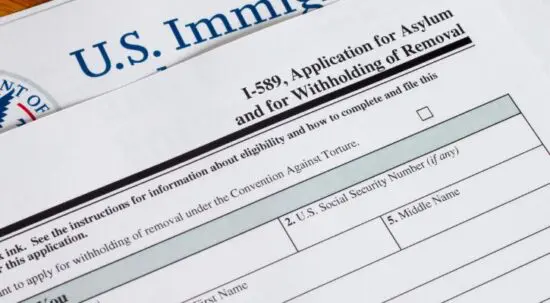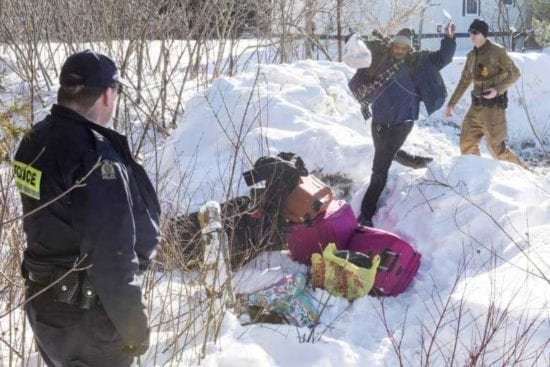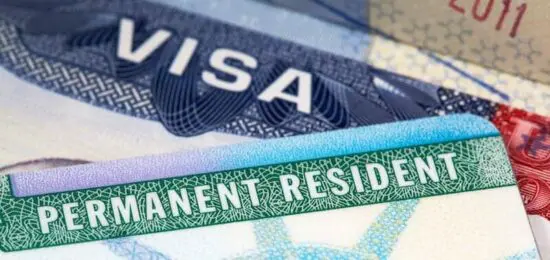What is asylum?
Asylum is a form of protection that allows you to stay in the USA if you have been persecuted or fear persecution in your home country because of your race, religion, nationality, membership in a particular social group, or political opinion.
If you are already in the United States, you must apply for asylum within one year of entering the USA. If you entered over a year ago and have not submitted an application, talk to an attorney as soon as possible to see if you qualify for an exception to the deadline.
Can I seek asylum at the U.S.-Mexico border?
Recent executive orders have made crossing the U.S.-Mexico border and seeking asylum at the border much harder. This means stricter rules and more enforcement. You still have the legal right to seek asylum.
Changes to CBP One and parole
- The CBP One app is no longer available. You can no longer use the CPB One app to schedule an appointment to present at a port of entry to seek asylum. All existing appointments have been canceled.
- CBP One parole has been revoked. If you entered the U.S. using the CBP One app, your parole may end sooner. Many people have received notices from DHS stating their parole is ending and telling them to leave the U.S. If you are affected, talk to an immigration lawyer as soon as possible. You may still be able to apply for asylum or other forms of relief.
- Parole at the border is extremely limited. Border officials only grant humanitarian parole in rare emergencies, and it is much harder to qualify. You will need strong evidence to meet the strict requirements. If you were previously eligible for parole, you may now face detention or deportation instead.
- New fee for parole. If you are applying for parole or re-parole, you must pay a $1,000 fee unless you qualify for an exception. The U.S. government will notify you and provide instructions on how to pay this if you are approved for parole. Do not pay this $1,000 fee when you submit Form I-131.
- A judge has temporarily stopped the government from quickly deporting people who entered the U.S. with humanitarian parole. This includes people who have been detained due to their loss of parole status.
Crossing between ports of entry
- New fines for crossing the border. Any adult or child who crosses between ports of entry may now face a $5,000 fine, even if they are seeking asylum.
- People caught crossing the border are removed immediately. If you cross the border without permission, you may be sent back right away with no chance to seek asylum or other protections.
- Increased military and border enforcement. The U.S. has declared a national emergency at the U.S. Southern border. You should expect increased detention, use of force, military presence, expanded wall construction, and surveillance tools like drones at the border and patrol boats along the Rio Grande River.
Trying to enter at a port of entry
- People at ports of entry are being turned back. If you try to present yourself at an official port of entry, you will likely be turned away.
- Remain in Mexico (MPP) has resumed while a court case is under review. This means most people asking for asylum at the border have to wait in Mexico while a judge decides their case. MPP does not apply to clients of Immigrant Defenders Law Center.
Additional restrictions and enforcement
- You will not be asked if you want to seek asylum. If you are afraid to return to your home country, you must clearly state that and ask for an interview. If you are afraid, clearly say: “I am afraid to go back to my home country.” Say it as early and as often as possible.
- Faster deportations (even for kids): You may be asked to sign papers saying you agree to leave the U.S. These are called “voluntary repatriation” forms. If you sign, you could be sent away quickly without seeing a judge. Many people, including kids traveling alone, are not told what the forms mean or given help in their language. Don’t sign anything until you talk to a lawyer.
You will not be asked if you want to seek asylum. If immigration officers detain you and you are afraid to return to your home country, say “I am afraid to go back to my home country” as clearly and loudly as possible. Repeat it whenever you can.
Find help
The asylum process is very complicated. It is important to review your options for legal help. Many organizations and lawyers offer free or low-cost legal services and support. Some are listed below.
You have a better chance of getting asylum with the help of an immigration attorney or accredited legal representative. They can help you complete your application and prepare for your interview or hearing.
- Need legal help? Learn how to find support.
- Seeking asylum? Join the Asylum Seeker Advocacy Project.
- Detained or know someone who is?
- Call the Immigration Detention Hotline at 209-757-3733 or other helpful hotlines
- Learn about your rights with ICE and CBP
- Know what to expect in detention

See a list of trusted groups that support migrants, refugees, and asylum seekers around the world, including along the Mexico border.
Local organizations helping people near the border
With the stricter immigration policies, non-profit organizations and shelters have been closing. This list may not be completely accurate.
Arizona
Florence Immigrant & Refugee Rights
International Rescue Committee
Kino Border Initiative
California
Al Otro Lado
Border Angels
Border Kindness
ImmDef
Jewish Family Service
New Mexico
Catholic Charities
Texas
Annunciation House
Good Neighbor Settlement House
Las Americas Immigrant Advocacy Center
ProBAR
Texas RioGrande Legal Aid
More from USAHello
Looking for specific information?
The information on this page comes from DHS, non-profit organizations working at the border, and other trusted sources. We aim to offer easy to understand information that is updated regularly. This information is not legal advice.





